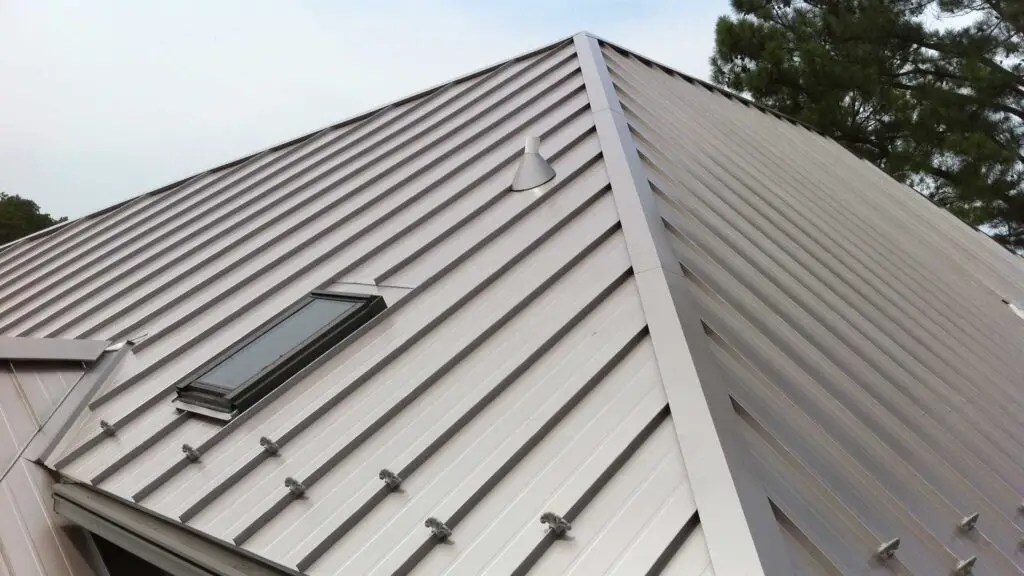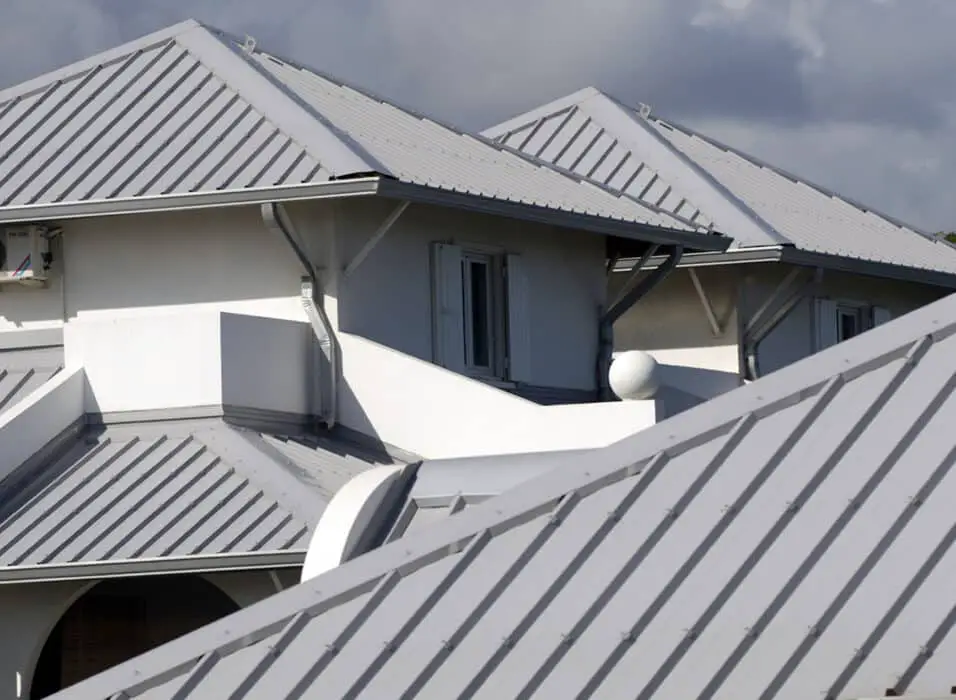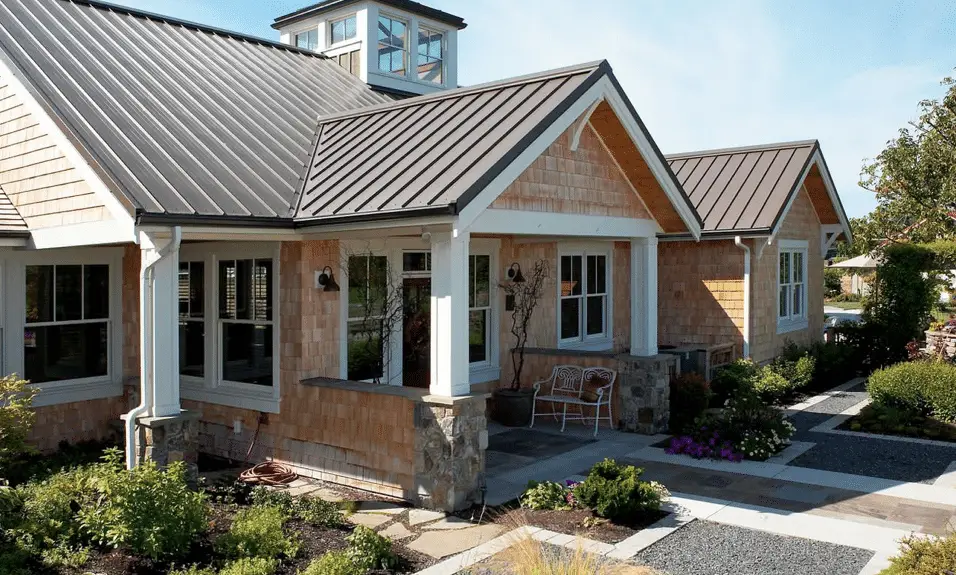How To Bend Standing Seam Metal Roof
Introduction
How To Bend Standing Seam Metal Roof: Standing seam metal roofs are a popular choice for homeowners and businesses due to their durability, longevity, and aesthetic appeal. However, there may be instances where you need to bend the metal roof to fit a specific architectural design or to accommodate unique structural requirements. In this article, we will explore the process of bending a standing seam metal roof and provide step-by-step instructions to help you achieve the desired results.
Before delving into the bending process, it is essential to understand the basics of standing seam metal roofs. These roofs consist of long, vertical metal panels that interlock with raised seams, creating a watertight barrier. The panels are typically made of materials like steel, aluminum, or copper, known for their strength and resistance to harsh weather conditions. The interlocking design ensures that the roof remains secure and prevents water leakage, making it an ideal choice for areas prone to heavy rainfall or snow.
When it comes to bending a standing seam metal roof, it is crucial to approach the task with caution and precision. The process requires specialized tools and techniques to ensure that the integrity of the roof is not compromised. One common reason for bending a metal roof is to accommodate architectural features such as curved or sloped roofs. By bending the metal panels, you can achieve a seamless and visually appealing design that complements the overall aesthetics of the structure.

Can metal roofing be bent?
Metal roofing is a popular choice for homeowners and businesses due to its durability, longevity, and aesthetic appeal. One common question that arises when considering metal roofing is whether it can be bent. In this article, we will explore the flexibility of metal roofing and discuss the factors that determine its bendability.
Factors affecting the bendability of metal roofing:
When it comes to bending metal roofing, several factors come into play. Generally, metal roofing made from materials such as steel, aluminum, or copper can be bent to a certain extent.
The thickness of the metal is an important consideration. Thicker metal roofing panels are typically less flexible and more difficult to bend compared to thinner ones. The specific profile of the roofing panels also plays a role.
Methods for bending metal roofing:
There are several methods available for bending metal roofing to achieve the desired shape or angle. One common method is using a metal brake, which is a specialized tool designed for bending metal sheets. A metal brake allows for precise and controlled bending, ensuring that the roofing panels maintain their structural integrity.
Another method is using a hand-operated bending tool, such as a hand seamer or a bending plier. These tools are suitable for smaller bends or adjustments and are often used for on-site modifications during the installation process.
Considerations when bending metal roofing:
While metal roofing can be bent, it is essential to consider certain factors to ensure a successful bending process. Firstly, it is crucial to follow the manufacturer’s guidelines and recommendations regarding bending limits and techniques. Each type of metal roofing may have specific instructions that need to be followed to avoid damaging the material.
Additionally, it is important to take into account the environmental conditions during the bending process. Extreme temperatures, especially in colder climates, can affect the flexibility of the metal. It is advisable to perform the bending process in moderate temperatures to prevent any potential issues.
What tool do you used to bend metal roofing panels?
3-Station Edge Roller (ER3)
The ER3 ensures a uniform bend along the entire length of roofing material, with the option for making curved bends. The tool quickly adjusts for making 5/8” to 4” (15.9–102 mm) bends in 29- to 22-gauge (0.36–0.76 mm) steel.
Introduction:
Metal roofing panels are a popular choice for their durability, longevity, and aesthetic appeal. However, to achieve the desired shape and fit, these panels often need to be bent or formed.
Bending Tools for Metal Roofing Panels:
Metal Brake: A metal brake is a versatile tool used for bending metal roofing panels. It consists of a clamping mechanism and a bending leaf that can be adjusted to create precise bends. Metal brakes are available in different sizes and capacities, allowing for flexibility in handling various panel widths and thicknesses. They are commonly used for both residential and commercial roofing projects.
Hand Seamer: Hand seamers are available in different jaw widths and can be used for both straight and curved bends.
Roll Former: A roll former is a machine used for continuous bending of metal roofing panels. It consists of a series of rollers that gradually shape the metal as it passes through. They offer precise control over the bending process and can handle various panel profiles and thicknesses.
Benefits of Using the Right Bending Tools:
Using the appropriate bending tools for metal roofing panels offers several benefits. Firstly, it ensures accurate and consistent bends, resulting in a professional-looking finished product. Secondly, it minimizes the risk of material damage or distortion during the bending process. Thirdly, it improves efficiency and saves time by allowing for faster and more precise bending. Lastly, using the right tools reduces the physical strain on the operator, making the bending process safer and more comfortable.
Bending metal roofing panels requires the use of specialized tools designed to handle the unique characteristics of metal materials.
What is the best tool to cut standing seam roofing?
Tin snips — These are effectively hand shears for cutting metal roofing. They come in various sizes and calibers, and can be used to cut tin, aluminum, steel and vinyl siding, as well. Variations of tin snips include aviation snips and compound snips, which may be used for heavier gauge metals.
When it comes to cutting standing seam roofing, having the right tool is crucial to ensure precise and efficient results. With various options available in the market, it can be challenging to determine the best tool for this task. However, by considering factors such as the type of roofing material, the desired cutting method, and the user’s experience level, one can make an informed decision.
Factors to consider:
Firstly, it is essential to consider the type of roofing material. Standing seam roofing can be made of different materials such as steel, aluminum, or copper. Each material has its own characteristics and requires specific tools for cutting. For instance, steel roofing may require heavy-duty tools, while aluminum roofing may be cut more easily with lighter tools.
Secondly, the desired cutting method should be taken into account. There are various ways to cut standing seam roofing, including using hand tools, power tools, or specialized roofing tools. Hand tools such as snips or shears are suitable for smaller projects or precise cuts, while power tools like nibblers or circular saws can handle larger jobs more efficiently.
Recommended tools:
One of the best tools for cutting standing seam roofing is a standing seam roof cutter. This specialized tool is designed specifically for this task and provides clean and accurate cuts. It typically features adjustable cutting depths and widths, allowing for versatility in different roofing projects. Additionally, standing seam roof cutters often have built-in safety features to prevent accidental damage to the roofing material or the user.
Another recommended tool is a metal nibbler. This handheld power tool is ideal for cutting through metal roofing, including standing seam roofing. Metal nibblers have a cutting head that operates in a shearing motion, providing precise and clean cuts without distorting the material. They are lightweight, easy to maneuver, and can handle various thicknesses of metal roofing.
Choosing the best tool to cut standing seam roofing depends on factors such as the roofing material, the desired cutting method, and the user’s experience level. Considering these factors, a standing seam roof cutter or a metal nibbler are recommended options. These tools offer precision, efficiency, and safety, ensuring that the roofing project is completed with excellent results.
What is the best way to cut metal roofing?
Cutting metal roofing can be a challenging task, but with the right techniques and tools, it can be done efficiently and effectively. Whether you are a professional roofer or a DIY enthusiast, knowing the best way to cut metal roofing is essential to ensure a precise and clean cut. In this article, we will discuss some of the most effective methods and tools for cutting metal roofing.
One of the most common and efficient ways to cut metal roofing is by using a circular saw with a metal cutting blade. This method allows for quick and accurate cuts, especially when dealing with larger sections of metal roofing. To ensure a clean cut, it is important to use a blade specifically designed for cutting metal. These blades typically have fine teeth and are made from materials such as carbide or high-speed steel.
If you prefer a more precise and controlled cutting method
Anibbler tool can be an excellent choice. Nibblers are handheld tools that allow you to cut metal roofing with great accuracy, especially when dealing with intricate shapes or curves. These tools work by punching small holes in the metal and then cutting along the desired line. Nibblers are particularly useful when working with thinner gauge metal roofing.
For smaller and more detailed cuts, tin snips can be a handy tool. Tin snips are essentially large scissors designed specifically for cutting metal. They come in various shapes and sizes, including straight-cut, left-cut, and right-cut snips. When using tin snips, it is important to make sure the blades are sharp and properly aligned to ensure a clean and accurate cut.
An angle grinder with a metal cutting disc can also be used to cut metal roofing. This method is particularly useful when dealing with thicker gauge metal or when making long straight cuts. However, it is important to exercise caution when using an angle grinder, as it can be a powerful and potentially dangerous tool. Always wear appropriate safety gear, such as goggles and gloves, and follow the manufacturer’s instructions.
There are several effective methods and tools for cutting metal roofing. Whether you choose to use a circular saw, nibbler tool, tin snips, or an angle grinder, it is crucial to prioritize safety and accuracy. Always wear the necessary protective gear and follow the manufacturer’s instructions for the chosen cutting method. By utilizing the appropriate tools and techniques, you can achieve precise and clean cuts in your metal roofing projects.
What method is used to bend metal?
Air bending is the most widely used type of metal bending and it’s not difficult to see why, as there are many advantages to this technique. Because the punch tip doesn’t need to be pushed past the surface of the metal, much less weight is required to bend in comparison to bottom bending and coining.
Bending metal is a common process used in various industries to shape and manipulate metal objects. It involves applying force to a metal workpiece, causing it to deform and take on a desired shape. The method used to bend metal depends on several factors, including the type of metal, its thickness, and the desired bend angle. In this article, we will explore some of the most commonly used methods for bending metal and discuss their advantages and limitations.
Methods for Bending Metal:
One of the simplest and most traditional methods for bending metal is manual bending. This method involves using handheld tools such as hammers, pliers, or bending brakes to apply force and shape the metal. Manual bending is often used for smaller projects or when precision is not a critical factor. It is commonly employed in artisanal metalworking, jewelry making, or small-scale fabrication.
Press brake bending is a more advanced method that utilizes a machine called a press brake. This machine consists of a punch and a die, which work together to apply force and shape the metal. Press brake bending is highly precise and can be used for a wide range of metal thicknesses and bend angles. It is commonly used in industrial manufacturing processes, such as sheet metal fabrication, where accuracy and repeatability are crucial.
Roll bending, also known as pyramid rolling, is a method used to bend metal into cylindrical or conical shapes. It involves passing the metal workpiece through a series of rollers that gradually apply force and shape the metal. Roll bending is commonly used in the production of pipes, tubes, and curved structural components. It offers excellent control over the bend radius and is suitable for both small and large-scale production.
Heat bending, as the name suggests, involves using heat to soften the metal before applying force to bend it. This method is commonly used for metals with high melting points, such as stainless steel or aluminum. By heating the metal to a specific temperature, it becomes more malleable and easier to shape. Heat bending is often used in industries like automotive manufacturing, aerospace, and construction.
Metal before applying force to bend it
There are several methods available for bending metal, each with its own advantages and limitations. Manual bending is suitable for smaller projects, while press brake bending offers precision and repeatability. Roll bending is ideal for creating cylindrical or conical shapes, and heat bending is used for metals with high melting points. The choice of method depends on the specific requirements of the project, including the type of metal, thickness, and desired bend angle. By understanding these methods, manufacturers and fabricators can select the most appropriate technique to achieve the desired results in metal bending.
Bending a standing seam metal roof involves several important steps to ensure a precise and professional result. The first step is to measure and mark the desired bend line on the metal sheet. This can be done using a measuring tape and a marker. Next, secure the metal sheet in a bending machine or brake, making sure it is aligned properly.
Once the metal sheet is securely in place, apply gradual pressure to the bending machine to create the desired bend. It is important to apply even pressure along the entire length of the bend line to avoid any inconsistencies. Depending on the thickness and type of metal, multiple passes may be required to achieve the desired bend.
After the bending process is complete, carefully inspect the bend for any imperfections or irregularities. If necessary, make any adjustments or corrections to ensure a precise and uniform bend. Finally, remove the metal sheet from the bending machine and proceed with the installation of the standing seam metal roof.
What tools and equipment are required for bending a standing seam metal roof?
When it comes to bending a standing seam metal roof, having the right tools and equipment is crucial for achieving a professional and precise result. Here are some of the essential tools and equipment you will need:
Metal Brake: A metal brake is the primary tool used for bending standing seam metal roofs. It is a machine that allows you to create accurate bends in the metal sheets. Make sure to choose a metal brake that is suitable for the size and thickness of the metal you are working with.
Seamers: Seamers are specialized tools used to create tight and secure seams between the metal panels. There are different types of seamers available, such as hand seamers and power seamers. These tools are essential for ensuring a watertight and durable roof.
Measuring and Marking Tools: Accurate measurements and markings are crucial for achieving precise bends. You will need tools such as a tape measure, square, and chalk line to ensure your bends are in the right position and angle.
Safety Equipment: Safety should always be a top priority when working with metal roofs. Make sure to have safety equipment such as gloves, safety glasses, and a hard hat to protect yourself from any potential hazards.
By using the right tools and equipment, you can ensure that your standing seam metal roof is bent accurately and securely, resulting in a long-lasting and visually appealing roof.
Are there any safety precautions that need to be taken while bending a standing seam metal roof?
When bending a standing seam metal roof, it is crucial to prioritize safety to prevent any accidents or injuries. Here are some important safety precautions to consider:
Personal Protective Equipment (PPE): Always wear the appropriate PPE, including safety glasses, gloves, and steel-toed boots. These protective gears will shield you from potential hazards such as sharp edges, falling debris, or accidental tool slips.
Secure the Work Area: Before starting the bending process, ensure that the work area is clear of any obstacles or tripping hazards. Remove any loose objects or debris that could cause accidents. Additionally, use caution tape or barriers to restrict access to the work area and prevent unauthorized personnel from entering.
Use Proper Lifting Techniques: Standing seam metal roofs can be heavy, so it is important to use proper lifting techniques to avoid strain or back injuries. Lift with your legs, not your back, and ask for assistance if needed. Utilize lifting equipment such as cranes or hoists when dealing with larger or heavier roof panels.
Secure the Roof Panels: Ensure that the roof panels are securely fastened or clamped down before bending. This will prevent them from shifting or falling during the bending process, reducing the risk of accidents.
Be Mindful of Electrical Hazards: If the bending process involves working near electrical lines or equipment, take extra precautions. Avoid contact with live wires and make sure all electrical sources are properly grounded. If necessary, consult a professional electrician to ensure a safe working environment.
By following these safety precautions, you can minimize the risk of accidents and create a safer working environment while bending a standing seam metal roof.
Can you provide any tips or techniques for achieving a precise bend in a standing seam metal roof?
When it comes to achieving a precise bend in a standing seam metal roof, there are several tips and techniques that can greatly help in ensuring a professional and accurate result. One important tip is to use a high-quality bending tool specifically designed for metal roofing. These tools are typically equipped with adjustable settings and guides that allow for precise measurements and angles.
Another technique to consider is using a brake or a bending machine. These tools provide consistent pressure and leverage, resulting in clean and accurate bends. It is crucial to carefully position the metal sheet within the brake, ensuring that it is aligned properly before making the bend. Taking the time to double-check measurements and angles before bending can save you from costly mistakes.
Additionally, it is essential to use proper hand placement and pressure when bending the metal. Applying even pressure along the entire length of the bend will help prevent any kinks or deformations. It is also advisable to make multiple smaller bends rather than attempting to achieve a sharp bend in one go. This gradual bending technique allows for better control and reduces the risk of damaging the metal.
Are there any common mistakes or challenges to be aware of when bending a standing seam metal roof?
When bending a standing seam metal roof, there are a few common mistakes and challenges that you should be aware of to ensure a successful and precise bend. One common mistake is not properly measuring and marking the metal before bending. Accurate measurements are crucial for achieving the desired bend angle and ensuring a proper fit. It is important to double-check your measurements and use a straight edge or square to mark the metal before bending.
Another challenge is using the wrong tools or equipment for bending the metal. It is essential to use specialized tools designed for bending standing seam metal roofs, such as a metal brake or a portable roll-forming machine. Using improper tools can result in uneven bends, damage to the metal, or even personal injury. Therefore, it is crucial to invest in the right tools and equipment for the job.
Additionally, one must be cautious of over-bending or under-bending the metal. Over-bending can cause the metal to crack or deform, while under-bending can result in an improper fit or gaps between the seams. It is important to follow the manufacturer’s guidelines and recommendations for the specific type and thickness of metal being used. Taking the time to practice on scrap pieces of metal can also help in mastering the technique and avoiding costly mistakes.

Conclusion
It is essential to have a thorough understanding of the specific bending techniques required for standing seam metal roofs. This includes knowledge of the different types of bends, such as simple bends, compound bends standing, and reverse bends. Each type of bend requires a different approach and technique, and it is crucial to follow the instructions carefully to avoid damaging the metal panels.
Lastly, safety should always be a top priority when working with metal roofs. It is important to wear appropriate protective gear, such as gloves and safety glasses, to prevent injuries. Additionally, working with metal panels can be physically demanding, so taking breaks and using proper lifting techniques is essential to avoid strain or accidents.
In summary, bending a standing seam metal roof is a complex process that requires knowledge, skill, and the right tools. By following the instructions provided in this guide and prioritizing safety, homeowners and professionals can successfully manipulate metal panels to achieve the desired shape and form. Whether it is for a residential or commercial project, bending a standing seam metal roof can add a unique touch to any structure and enhance its overall aesthetic appeal.








